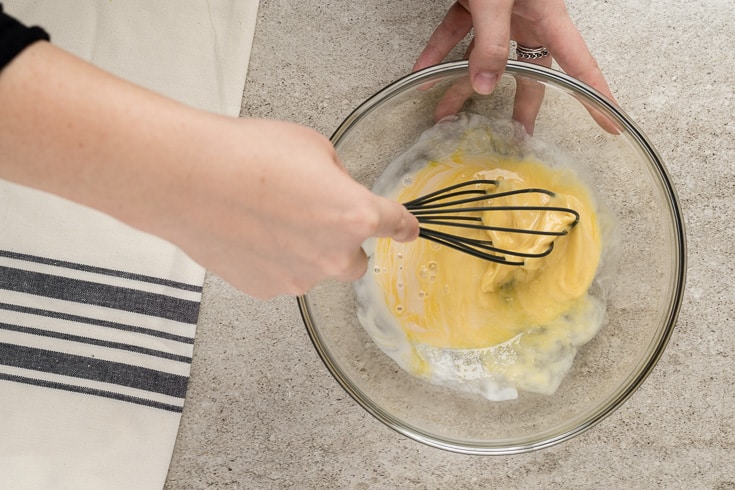Paleo New Orleans Beignet Recipe

Have you ever been to one of the most festive cities in the United States and tasted a New Orleans beignet? It seems like every person who visits New Orleans doesn’t leave without trying these classic French donuts — and the good news is you can make your own with this easy beignet recipe.
Many people adore beignets (also called “New Orleans donuts” or “Louisana-style doughnuts”), which are typically deep-fried in unhealthy oil and loaded with multiple forms of refined sugar, but not this beignet recipe! This twist on a classic uses much healthier ingredients (like coconut oil), and it’s even gluten-free.
Before we dig in to how to make beignets, exactly what is a beignet?
What Is A Beignet?
The beignet was brought by French colonists to New Orleans in the 18th century. From then on, French beignets have become quite entrenched in the cuisine of Louisiana.
In fact, they became Louisiana’s official state donut in 1986!
Pronounced ben-YAY, this sweet treat is often described as a cross between a French pastry and an American donut. They are fried, raised pieces of dough, commonly around two inches in diameter or two inches square.
This New Orleans pastry is often eaten as a dessert, for breakfast or a sweet treat at any hour.
As I already mentioned, typically a beignet gets deep-fried. It’s also usually made from choux pastry, which is a light pastry dough commonly used to make desserts with a European origin — like éclairs and profiteroles.
This light and airy dough is ideal for sweets that involve a filling of some kind.
While that typical beignet dough may be tasty, for many people with a gluten allergy or gluten intolerance, most beignet recipes are a complete no-go. Not anymore because this beignet recipe is actually gluten-free!

Key Ingredients
For a dessert, this beignet recipe is pretty healthy. Per serving, it’s not overdoing it at all when it comes to calories, and more importantly, it’s not too high in sugar.
It also has a notable amount of energy providing protein and healthy fat. That’s because the beignet main ingredients in this beignets recipe are on the healthier side.
- Active dry yeast — This is the base for the pastry and necessary to get the dough to rise.
- Arrowroot and Paleo flour — Arrowroot and the Paleo flour blend keep this recipe gluten-free, and they benefit the gut, urinary tract and immune system.
- Cinnamon — One of the most common spices in the world, cinnamon is high in health-promoting antioxidants that can help relieve inflammation, protect the heart, stabilize blood sugar, preserve brain function, benefit skin health and so much more.
- Coconut milk, oil and sugar — High in healthy fats and better than their dairy and refined alternatives, coconut milk, coconut oil and coconut sugar all provide a host of benefits in moderation and help up the nutritional profile of this dessert.
- Eggs — High in protein and collagen, eggs support heart, eye, immune, liver, brain and skin health.
Paleo Beignet Recipe: How to Make Beignets
Making beignets at home can be a lot healthier and easier than you think with a recipe like this one. Are you ready to make some homemade beignets?
First, sift the Paleo flour to remove any large clumps, and set it aside.

In a bowl, mix together the water, yeast and sugar. Then let stand for about eight minutes.

In a separate bowl, whisk eggs, evaporated milk and salt together. Now, add the yeast mixture you set aside.
Add ½ the amount of flour, and then mix. Add coconut oil, remaining flour and cinnamon.

Knead with your hands to ensure all ingredients are mixed well, and mold the dough into a large ball.
Place dough ball in the bowel, and cover it with a towel. Let stand for at least one to two hours.
Heat coconut oil in a small saucepan over medium heat. Right before you’re ready to fry them (to ensure they stay intact), form the dough tightly into one- to two-inch balls.

Fry the dough balls for three to four minutes on each side or until they are golden brown.

Cool on a paper towel, and sprinkle with equal parts arrowroot flour and maple sugar for a powdered sugar substitute.
Take a bite of this beignet recipe and enjoy! Want extra sweetness? You can try dipping these in maple syrup for a little added flavor.
Print
Paleo New Orleans Beignet Recipe
- Total Time: 1 hour 30 minutes
- Yield: 24 beignets (12 servings) 1x
- Diet: Gluten Free
Description
Beignets are typically deep-fried in unhealthy oil and loaded with multiple forms of refined sugar, but not this beignet recipe!
Ingredients
- ½ cup room temperature water
- 2 tablespoons active dry yeast
- ½ cup coconut sugar
- 3 cups Paleo flour
- 2 eggs
- pinch of sea salt
- 1 teaspoon cinnamon
- ¼ cup evaporated coconut milk
- 1½ tablespoons coconut oil
- coconut oil, for frying
- equal parts arrowroot flour and maple sugar for powdered sugar substitute
Instructions
- Sift Paleo flour to remove large clumps and set aside.
- In a bowl, mix together water, yeast and sugar. Let stand for about 8 minutes.
- In a separate bowl, whisk egg, evaporated milk and salt.
- Add yeast mixture.
- Add ½ the amount of flour and mix.
- Add coconut oil, remaining flour and cinnamon.
- Knead with hands to ensure all ingredients are mixed well.
- Mold dough into a large ball and cover bowl with a towel. Let stand for at least 1–2 hours.
- Heat oil in a small saucepan over medium heat.
- Form dough tightly into 1–2 inch balls just before you fry to make sure they stay intact.
- Fry dough balls for 3–4 minutes on each side or until golden-brown.
- Cool on a paper towel and serve with powdered sugar substitute.
Notes
- The powdered sugar alternative is optional.
- To add extra sweetness, try dipping in maple syrup or other healthy natural sweeteners.
- Prep Time: 30 min
- Cook Time: 60 min
- Category: Desserts
- Method: Pan-fry
- Cuisine: French
Nutrition
- Serving Size: 62g (2 beignet balls)
- Calories: 174
- Sugar: 4.4g
- Sodium: 13mg
- Fat: 4.1g
- Saturated Fat: 2.8g
- Unsaturated Fat: 1.3g
- Trans Fat: 0g
- Carbohydrates: 29.3g
- Fiber: 1.6g
- Protein: 5.1g
- Cholesterol: 27mg
Comments
Please keep comments under 200 characters.






I rarely leave reviews like this but these were terrible! It sucks when you spend almost all day on a recipe (I even had to make my own evaporated coconut milk from scratch)… made my own ‘paleo’ flour, and let it sit for 2 hours before frying etc. My main issue was that when frying they just started falling apart. They were really frying anything except the ends. Fast forward to them being done, the taste and texture are awful as well. It’s basically a ball of sweetened almond flour fried in coconut oil. They were too dense and tasted way too almond/coconuty
Hi Jennie … very sorry to hear that. I will let our recipe developer know and we will adjust!
The phrase ‘Paleo flour’ has a link to a recipe for it combining 4 flours. Coconut, almond, tapioca, and arrowroot.
I was wondering the same thing about the Paleo Flour Blend and couldn’t find it in another Dr. Axe recipe post. So I looked up a couple:
2 cups almond flour, sifted*
1 & ⅓ cups tapioca flour/tapioca starch
⅔ cup coconut flour
*Courtesy of A Calculated Whisk
OR
1 cup organic coconut flour
1 cup blanched almond flour
1/2 cup arrowroot starch
*Courtesy of Health Starts in the Kitchen
Please explain what is “Paleo flour.” What are the ingredients and recipe to make this?
Thank you
Dr. Axe, I have all types of gluten free flour but not Paleo what can I use in stead or what makes up Paleo flour I love all you do for all of us, thank you so very much!